Volcanoes National Park, Rwanda, is famed for its mountain gorillas, but another primate treasure lurks in the verdant slopes – the golden monkey. With their glistening reddish-gold coats, these playful creatures are an enchanting sight to behold.
Golden Monkeys are a sub-species of the Sykes monkey, also known as the blue monkey. they normally live in huge groups of about 60 members in a family. They are easily differentiated by the bright orange fur spread out all over their bodies.
Golden monkeys are listed as endangered by the International Union for the Conservation of Nature (IUCN). Their estimated population of 5,000 individuals clings to the high-altitude forests of the Virunga Mountains, a volcanic range shared by Rwanda, Uganda, and the Democratic Republic of Congo.
Volcanoes National Park offers a unique chance to encounter these fascinating primates.
Two habituated golden monkey groups reside within the park. Habituation is a process where monkeys become accustomed to human presence, allowing for close observation without disturbing their natural behavior. The largest troop, numbering over 80 members, calls the slopes of Mount Sabyinyo home.
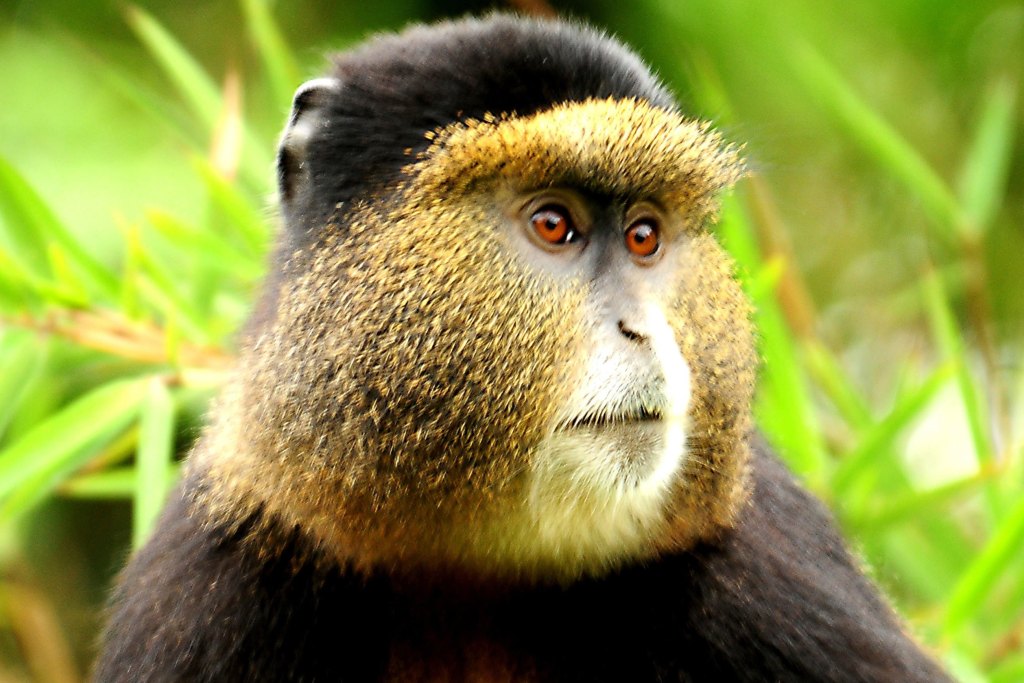
The Life Cycle of Golden Monkeys in Rwanda
Golden Monkeys, indigenous to the high-altitude regions of the Virunga Mountains in Rwanda, go through distinct stages in their life, much like other primates. From the vulnerability of infancy to the assertiveness of adulthood, their life cycle is a vivid portrayal of survival, adaptation, and community in the misty bamboo forests of Rwanda.
Birth and Infancy: Golden Monkeys typically give birth to a single offspring after a gestation period of about 4-5 months. At birth, the infant clings tightly to its mother, relying on her not only for nutrition but also warmth and protection. The mother’s role during this period is pivotal; she provides constant care, feeding the infant with her milk, and shielding it from potential threats.
Juvenile Stage: Around the age of 6 months, young Golden Monkeys become more independent, starting to explore their surroundings and play with other juveniles. However, they still rely on their mother’s milk and continue to nurse until they are about a year old. This is a crucial time for learning – they observe adults and mimic behaviors necessary for survival, from foraging to navigating the dense forests.
Adolescence: As they transition into adolescence (around 2-3 years of age), Golden Monkeys start to show signs of sexual maturity. While they are not yet ready to mate, adolescent males begin to challenge each other, preparing for the dominance battles they will face as adults. Both males and females start integrating more into the troop’s social structure, learning the dynamics that will dictate their adult life.
Adulthood: By the age of 4-5 years, Golden Monkeys reach full maturity. Males often leave their birth troop to either live solitarily, join other males in bachelor groups, or challenge dominant males in established troops for mating rights. Females, on the other hand, usually remain with their natal group and start reproducing. Adult females typically give birth once every 2 years.
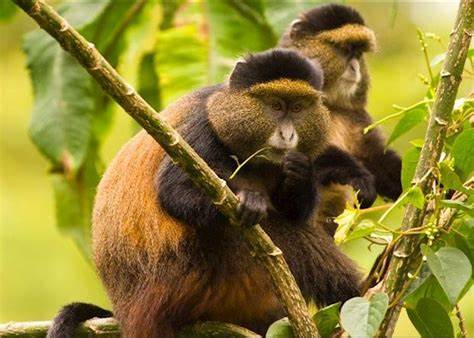
Social Structure and Mating: Golden Monkey troops, which can comprise anywhere from 30 to 80 individuals, are often led by a dominant male, who has exclusive mating rights with the females. Mating season tends to be seasonal, with most births occurring during specific months, ensuring the young have the best chance of survival with abundant food.
Senior Stage: As they age, usually around 15 years or more, Golden Monkeys face challenges like reduced mobility and decreased rank in the troop hierarchy. While their lifespan in the wild is not thoroughly documented, it’s believed they can live up to 20 years or more, depending on factors like predation, food availability, and disease.
The life cycle of the Golden Monkey reflects the complex interplay of biology and environment. Through each stage, these primates demonstrate a resilience and adaptability that allows them to thrive
Trekking Golden Monkeys
Unlike gorilla trekking, which can involve steeper climbs, golden monkey treks are on relatively flat terrain. This makes them a good option for visitors with moderate fitness levels. Treks typically start in the morning after a briefing by park guides. Following trails of bamboo shoots, your guide will lead you through the lush undergrowth in search of the monkeys.
Once located, visitors are allowed a magical hour observing the monkeys in their natural habitat. Their social interactions are a joy to witness. Watch as they playfully leap through the bamboo forests, their golden coats flashing in the sunlight. Mothers tend to their young, while the dominant male oversees the group.
A golden monkey trek is more than just an encounter with these charismatic primates. The trek itself offers a chance to immerse yourself in the beauty of the park’s ecosystem. Keep an eye out for other park residents – colorful birds flitting through the trees, and unique plant life blanketing the volcanic slopes.
Golden monkey trekking is a vital source of income for conservation efforts in Volcanoes National Park. Park permits fund anti-poaching patrols and habitat protection, ensuring the survival of these golden gems for future generations. By following park regulations and respecting the monkeys’ space, visitors can contribute to this vital cause.
Golden Monkey Habitat and Diet
Golden monkey species can only be found in four National parks, that is volcanoes National Park in Rwanda, Mgahinga National Park of Uganda, Virunga National Park and Kahuzi Beige National Park of the Democratic Republic of Congo.
Diet
Bamboo: Bamboo constitutes a significant portion of the Golden Monkey’s diet. They feast on the young, tender bamboo shoots, leaves, and stems. Given the seasonal growth patterns of bamboo, the monkeys’ diet adapts based on its availability.
Fruits: In addition to bamboo, Golden Monkeys consume a variety of fruits available in their habitat. This not only provides them with essential nutrients but also ensures dietary diversity, especially during times when bamboo is scarce.
Leaves and Flowers: The lush montane forests of the Virunga Mountains offer a plethora of plant varieties. Golden Monkeys are often seen nibbling on various leaves, buds, and flowers, supplementing their primary bamboo diet.
Insects: Though largely herbivorous, Golden Monkeys occasionally consume small insects. This provides an additional protein source, complementing their otherwise plant-centric diet.
Water Source: Living in the misty high-altitude regions means that the Golden Monkeys have access to water from morning dews and streams in their habitat. They are often observed licking dew from bamboo leaves or drinking directly from freshwater streams.
The habitat and diet of the Golden Monkeys in Rwanda’s Volcanoes National Park are beautifully intertwined. Their survival is a testament to nature’s intricate design, where every element, from the towering bamboo groves to the tiniest insect, plays a part in the grand tapestry of life.
Trekking starts as early as 7:30am after a briefing at the park headquarters. The easiest way to trek golden monkeys is by spotting fresh leftovers of bamboo shoots. Once you meet these, you will notice the monkeys swing form one tree branch to another and the best way to capture an image is by putting your camera to fast shutter shot speed.
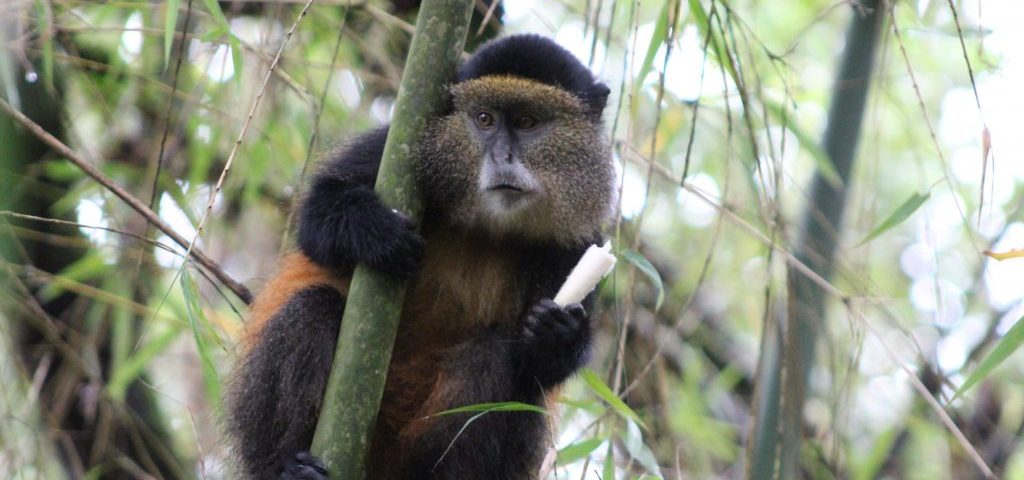
Golden monkey trekking permits in Rwanda are sold at USD100 per person per trek.
So, if you find yourself in Volcanoes National Park, don’t miss the chance to be enchanted by the golden monkeys. Their playful antics and golden beauty will leave a lasting impression, while your visit contributes to the preservation of this remarkable species.

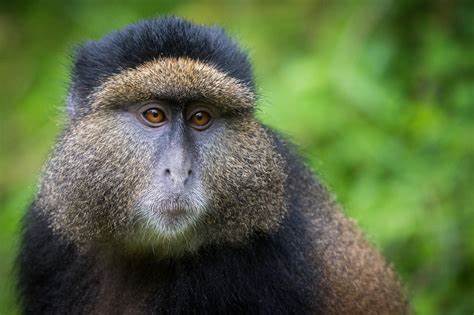


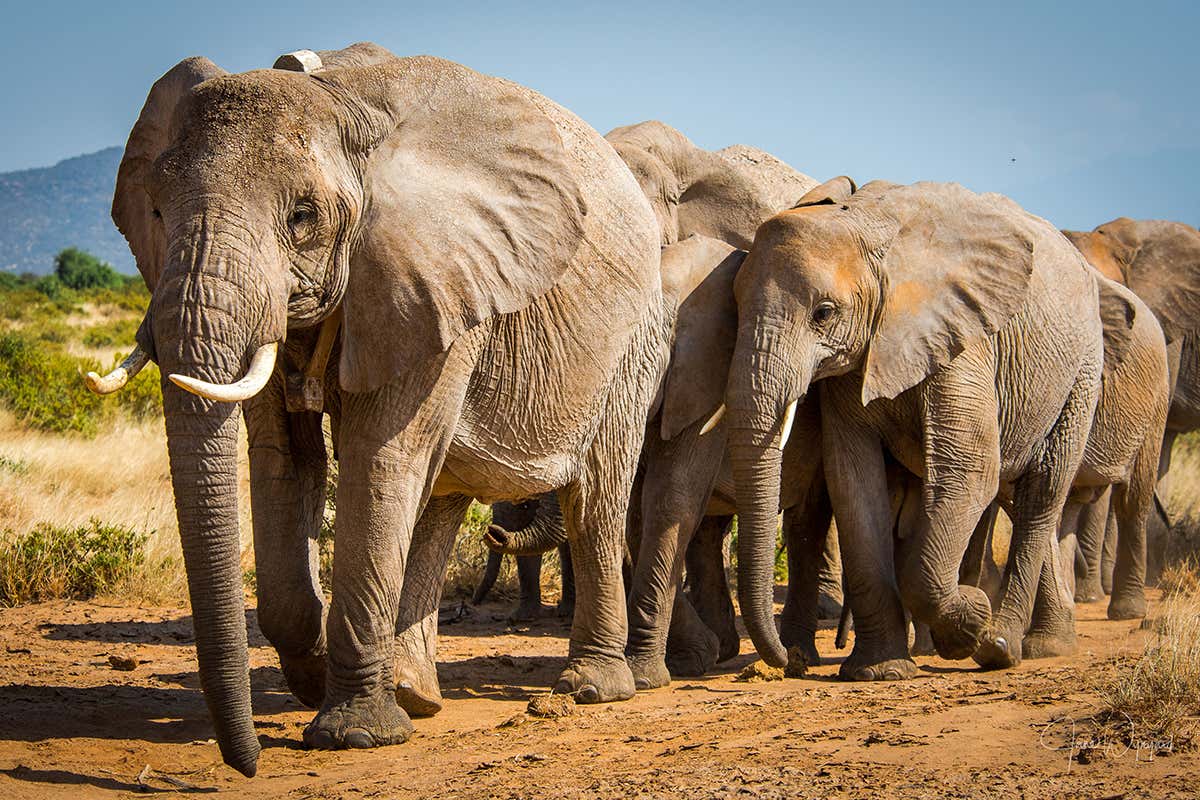
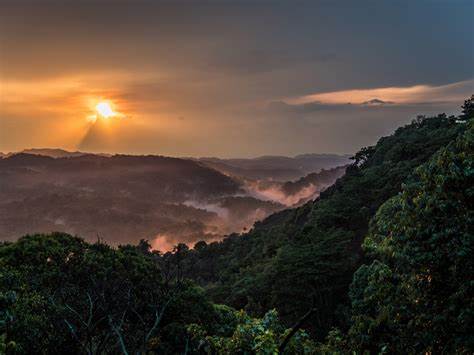
Fantastic article! So glad I found this.